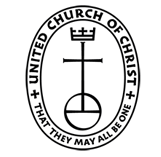“Never Too Late” Sermon on April 10, 2011
April 10, 2011
Scripture: John 11
Now a certain man was ill, Lazarus of Bethany, the village of Mary and her sister Martha. So the sisters sent a message to Jesus, “Lord, he whom you love is ill.” But when Jesus heard it, he said, “This illness does not lead to death; rather it is for God’s glory, so that the Son of God may be glorified through it.” Accordingly, though Jesus loved Martha and her sister and Lazarus, after having heard that Lazarus was ill, he stayed two days longer in the place where he was. Then after this he said to the disciples, “Let us go to Judea again.” When Jesus arrived, he found that Lazarus had already been in the tomb four days. When Martha heard that Jesus was coming, she went and met him, while Mary stayed at home. Martha said to Jesus, “Lord, if you had been here, my brother would not have died. But even now I know that God will give you whatever you ask of him.” Jesus said to her, “Your brother will rise again.” Martha said to him, “I know that he will rise again in the resurrection on the last day.” Jesus said to her, “I am the resurrection and the life. Those who believe in me, even though they die, will live, and everyone who lives and believes in me will never die. Do you believe this?” She said to him, “Yes, Lord, I believe that you are the Messiah, the Son of God, the one coming into the world.” When Mary came where Jesus was and saw him, she knelt at his feet and said to him, “Lord, if you had been here, my brother would not have died.”
When Jesus saw her weeping, and those who came with her also weeping, he was greatly disturbed in spirit and deeply moved. He said, “Where have you laid him?” They said to him, “Lord, come and see.” Jesus began to weep. So the people said, “See how he loved him!” But some of them said, “Could not he who opened the eyes of the blind man have kept this man from dying?” Then Jesus, again greatly disturbed, came to the tomb. It was a cave, and a stone was lying against it. Jesus said, “Take away the stone.” Martha, the sister of the dead man, said to him, “Lord, already there is a stench because he has been dead four days.” Jesus said to her, “Did I not tell you that if you believed, you would see the glory of God?” So they took away the stone. And Jesus looked upward and said, “Father, I thank you for having heard me. I knew that you always hear me, but I have said this for the sake of the crowd standing here, so that they may believe that you sent me.” When he had said this, he cried with a loud voice, “Lazarus, come out!” The dead man came out, his hands and feet bound with strips of cloth, and his face wrapped in a cloth. Jesus said to them, “Unbind him, and let him go.” Many therefore, who had come with Mary and had seen what Jesus did, believed in him.
Sermon: Never Too Late
by Rev. Doreen Oughton
Another long, rich passage for our Lenten reflection. A story rife with emotion, suspense, and complex relationships. What I’d like to do this morning is explore the story from three perspectives. The first perspective considers what it might have been like for Mary and Martha. Theologian Sarah Dylan Breuer wrote such a thoughtful reflection on this, says it so much better than I could, that I will simply share her words with you.
Out of the depths have I called to you, O LORD; LORD, hear my voice; Out of the depths they called to Jesus. Mary and Martha were in dire straits. The way they’d been living was in many ways exactly in tune with Jesus’ radical call; they lived with their brother Lazarus and remained remained “unattached,” a path that gave them a great deal of freedom, including the freedom to be extravagantly generous, as Mary was when she poured out ointment worth a year’s wages for many onto Jesus’ feet. Everybody knows that these people, this family of brother and sisters who lived with God as their father, are being faithful on the path Jesus showed them.
And now the risk involved in that path is frighteningly clear to Mary and Martha, as their brother Lazarus is dying. Lazarus is the only male in the household in a culture in which a woman without a man was profoundly vulnerable to poverty and exploitation. Lazarus was not only a beloved brother, but was also the closest thing to Social Security that Mary and Martha had, and he was slipping away. So they called to Jesus, calling on him as one who loves Lazarus, and challenging Jesus to behave in a manner in keeping with that love. Jesus doesn’t come. He doesn’t come to be with his beloved friend as he lies dying, and he doesn’t come to honor his friend by being present at his funeral.
When the sisters get word that Jesus is finally on his way, Martha impetuously and angrily runs out to meet him — conduct that would have been seen as scandalous, or even dangerous for a woman alone. She runs at Jesus with the depths of her grief and anger. If nothing else, her situation proves that being faithful to Jesus is in no way a guarantee against pain and tragedy. There is no one on earth whose righteousness, wisdom, hard work, or good planning will preserve her from seeing the depths that Martha sees. Good people become widows and orphans. It’s a fact, and no less of a fact for Jesus’ coming.
But there is something else. We can cry to God from the depths. What Sara Maitland writes in the voice of a grieving mother strikes me as a psalm, a cry from the depths, that resonates with the longings of all of us who have seen grief. She writes, “When my child died I knew that there was no safety, anywhere, and I will not sacrifice to false gods. There is no safety, but there is wildness and joy, there is love and life within the danger. I love you. I want to be with you. … I refuse to believe that we only get one chance. This letter is just a start. I am going to hunt you down now in all the lovely desolate places of the world. … Wherever there is a perfect sunrise, a dark cliff, a small pool of water, a distant city wreathed in morning mist, there I will be waiting for you. Please come. Please come soon.”
Sarah resumes: There is no depth, no loss, no tragedy, no disease or death, nothing on heaven or on earth or under the earth that can place the world or anyone in it beyond God’s redemption. Good people become widows and orphans, but God defends the widow and the orphan, and will not leave those God loves bereft. And there is something more than that, even, something more fundamental to the order of the universe: that God is redeeming the universe God made and loves. When we cry out from the depths, God hears. When Jesus seems slow in coming, he is coming nonetheless. And if we worry that it is too late, Jesus shows that it is never too late. After we have become convinced that all is lost, when we are ready to concede to death and are seeking only to contain the damage or bury it, Jesus demonstrates that there is no loss, no death, no tragedy, no depth, no power in heaven or on earth on under the earth that can place a person, a situation, or a world beyond God’s redemption, beyond the reach of infinite love and abundant life.
Next I offer my own thoughts, and questions, about this story and the way Gospel writer John portrays Jesus. Now all four of the gospels tell many stories of miracles. There are healings – healings of blindness, leprosy, lameness, chronic bleeding, all manner of disease. The gospel of Matthew tells 21 stories of miracles, Mk relates 19, Luke shares 22. In the gospel of John, miracles are referred to as signs, and there are only 8 such stories. There is a particular pattern to each of the stories. Jesus performs a miraculous act, then there is a discussion about what it means, what it says about who Jesus is, and ultimately, more people believe in him as the Savior and Messiah, as the son of God, as the light and the way. In this story the order is different. There is lots of discussion about who Jesus is and what his purpose is before the miracle. He hears that his dear friend Lazarus is ill, and says that this illness is for God’s glory, and so that he, the son of God, will be glorified by it. And then he stays away for two whole days. This is hard for me to think about – that Jesus seems to use his friend’s illness, allows him to die, all to make a point about himself. I imagine what the family went through, the roller coaster of emotions. First confident that Jesus would show up in time, then thinking perhaps he can perform a miracle from a distance. He’s done that in other healing stories, didn’t even have to be there. But Jesus doesn’t show up, doesn’t cure from a distance, isn’t even there for the family to help prepare the body for burial, to sit with the mourners. How crushed and abandoned they must have felt.
But as I consider what Jesus is about to do, not just in raising Lazarus, but in going to Jerusalem to face his own arrest, betrayal and death, I do see that the point he needs to make is really that important. I know it is not something Jesus does glibly or lightly. He’s not smiling, I’ll bet, when he says that the illness and death of Lazarus are for God’s glory, and glorification of his own purpose. It is not like the news reporter who can barely contain her glee over a horrific story that allows her to show off her ability to get the inside scoop. No, Jesus is struggling. We are told he became greatly disturbed after talking with Mary, and when he was brought to the tomb. He wept in grief. I believe that even though he trusted God and knew this life would be resurrected, he connected with the pain and suffering of loss. He felt it in his very being. And I believe he knew that Mary and Martha, that his disciples and followers all had to feel it too. They had to go to that place of feeling crushed and abandoned. They had to get to the place of hopelessness.
Jesus had healed people and given them a new way to live before. The man born blind could suddenly see, the lame could walk again. Illness and disease that had kept people on the fringe of community were cured and they were restored. Jesus had saved people from impending death. But Jesus wanted his followers to know that the work he was sent to do was more than that. Works of healing and comfort and restoration were not his primary purpose. His primary purpose was to get people to change the way they made community. He wanted them to stop sending into exile the blind and the lame. He wanted them to stop finding scapegoats for these afflictions, assigning blame and justifying scorn or detachment from suffering human beings. And he knew that that would involve deep grief and loss, and a strong sense of hopelessness. He was willing to go to Jerusalem to serve as the greatest scapegoat, to be killed for his message. His glorification would not look very glorious. His followers would experience his death deeply. They would mourn, feel abandoned and crushed. He needed to let them know in some way that even in from that place, his love for them was more powerful than they could imagine. His love, God’s love, was more powerful than grief, than anger, than hopelessness. It was more powerful than death. And so through his own distress, through all those human emotions, Jesus taught us how to ground ourselves in that truth. Our belief in him will not spare us pain and suffering and grief. We can let ourselves go there. We can grieve with others while still trusting in God. We can, as Jesus did, call on others to participate – take me to where he’s laid, move the stone, unbind him. We can, as Jesus did, pray to God, ask people to believe in his message, to believe that he is indeed the resurrection and the life. We can follow him not only to the cross, to the tomb, but right out of it and into Easter, the spring of a whole new way of being.
And finally I would like to share a brief reflection by Jan Richardson who considers the perspective of Lazarus in this story.
I wonder if it gave him pause. I wonder if Lazarus, stirring in his four-day tomb and beginning to feel the grave clothes weighing on his waking skin, had to take a moment to consider. When he heard that cry from beyond the threshold of his tomb; when he awoke to that voice, beloved but already growing strange to ears that had begun to settle into the silence; when that command came and challenged the dead calm of the grave, did Lazarus give a thought to staying put? It cannot have been easy, feeling the pulse of life tickle at the flesh already loosening from his limbs. Was he tempted to simply roll over and turn his face toward the wall so that he could continue his slide into decay?
Nobody goes into the tomb to pull Lazarus out; no one crosses into his realm to haul him to this side of living. Lazarus has to choose whether he will loose himself from the hold of the grave: its hold on him, his hold on it. Only when Lazarus takes a deep and deciding breath, rises, returns back across the boundary between the living and the dead: only then does Jesus say to the crowd, “Unbind him, and let him go.” Not until Lazarus makes his choice does the unwinding of the shroud begin, and the grave clothes fall away.
As we move deeper into the Lenten path, what might you need to let go of, to loose yourself from, so that you can move with freedom into the life to which Christ calls you? Peace to you in your waking, rising, living days.








